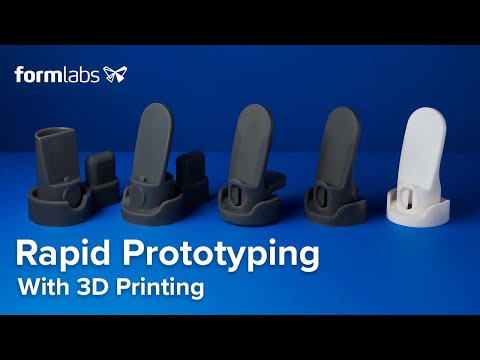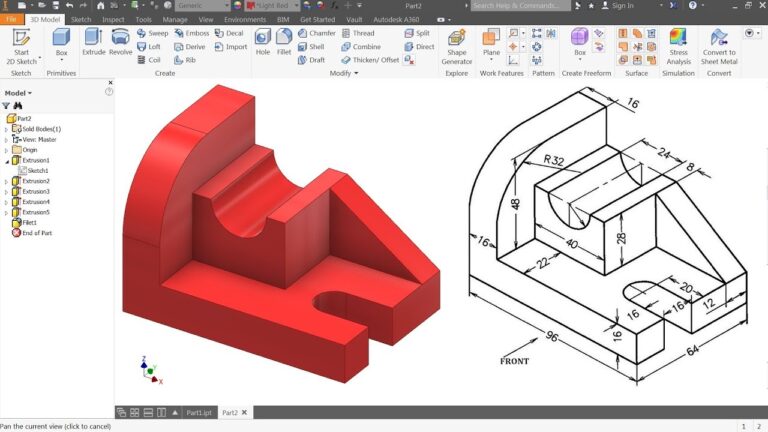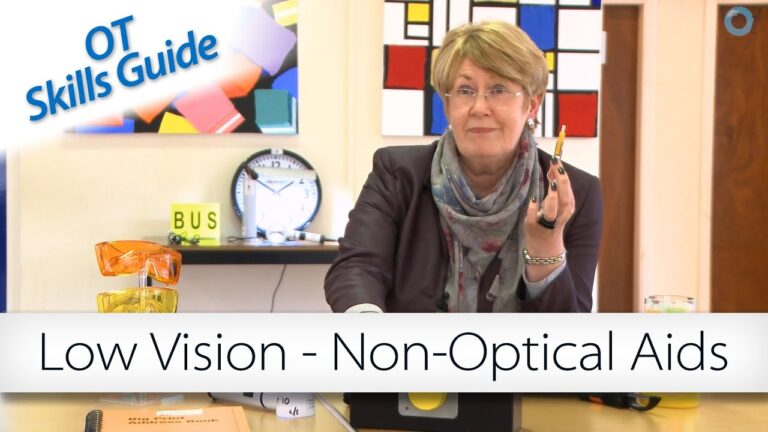Rapid Prototyper Job: Description & Salary
A Rapid Prototyper is responsible for creating and developing prototypes for various projects and products. They work closely with designers, engineers, and product managers to bring ideas to life and ensure the functionality and feasibility of the final product. The main objective of a Rapid Prototyper is to quickly produce prototypes that can be tested and validated before moving forward with full-scale production. The role of a Rapid Prototyper includes utilizing various tools and technologies such as 3D printing, CNC machining, and laser cutting to create physical prototypes. They are also proficient in computer-aided design (CAD) software to design and model prototypes. Additionally, Rapid Prototypers are responsible for analyzing and evaluating the performance and quality of prototypes, making necessary adjustments and improvements as needed. Rapid Prototyper Salary
The salary of a Rapid Prototyper can vary depending on factors such as experience, location, and employer. On average, a Rapid Prototyper can earn between $60,000 and $90,000 per year. Entry-level positions may start at a lower salary, while more experienced Rapid Prototypers with specialized skills and expertise can command higher salaries. In addition to base salary, Rapid Prototypers may also receive bonuses and benefits such as healthcare, retirement plans, and paid time off. Some companies may offer additional perks such as flexible work schedules or opportunities for professional development. Overall, a career as a Rapid Prototyper offers an exciting opportunity to work on cutting-edge projects and contribute to the innovation and development of new products.

Rapid Prototyper Job Description Template
Rapid Prototyper Job Description A rapid prototyper is a highly skilled professional who specializes in creating prototypes of products or systems using advanced technologies and tools. They play a crucial role in the product development process by transforming ideas and concepts into tangible prototypes that can be tested and evaluated for functionality, usability, and marketability. Responsibilities: – Collaborating with designers, engineers, and product managers to understand requirements and specifications for the prototype. – Using various software and hardware tools to design and develop prototypes that accurately represent the desired product or system. – Conducting thorough research and analysis to identify the most suitable materials, components, and technologies for the prototype. – Testing and evaluating prototypes to ensure they meet design specifications and functional requirements. – Making necessary adjustments and refinements to prototypes based on feedback and testing results. – Documenting and presenting findings, recommendations, and improvements to stakeholders. – Keeping up-to-date with emerging technologies and trends in rapid prototyping to enhance skills and knowledge. Qualifications: – A bachelor’s degree in engineering, industrial design, or a related field. – Proficiency in CAD software and other prototyping tools. – Strong problem-solving and analytical skills. – Excellent attention to detail and ability to work with precision. – Effective communication and collaboration skills. – Ability to work under pressure and meet tight deadlines. – Knowledge of manufacturing processes and materials. In conclusion, a rapid prototyper plays a crucial role in the product development process by creating prototypes that can be tested and evaluated before finalizing the design. Their expertise in rapid prototyping technologies and tools is essential for ensuring the successful development of innovative and marketable products or systems.Rapid Prototyper Responsibilities
Rapid Prototyper Requirements
How Much Does A Rapid Prototyper Make?
Rapid Prototyper Salary
| Experience Level | Salary |
|---|---|
| Entry-level | $50,000 – $70,000 |
| Mid-level | $70,000 – $90,000 |
| Senior-level | $90,000 – $120,000 |
A Rapid Prototyper is a professional who specializes in quickly developing prototypes of products or software applications. These prototypes are used to test and validate design concepts before investing significant resources into full-scale production or development.
The salary of a Rapid Prototyper varies based on their level of experience. Entry-level Rapid Prototypers typically earn between $50,000 and $70,000 per year. Mid-level professionals can expect salaries ranging from $70,000 to $90,000 annually. Senior-level Rapid Prototypers, with extensive experience and expertise, can earn between $90,000 and $120,000 per year.
It is important to note that these salary ranges can vary depending on factors such as the industry, geographical location, and company size. Additionally, Rapid Prototypers may have additional benefits and bonuses based on their performance and contributions to the projects they work on.
Overall, a career as a Rapid Prototyper offers competitive salaries and the opportunity to work on innovative projects and technologies.
Rapid Prototyper Salaries by Country
Top Paying Countries for Rapid Prototyper
| Country | Average Salary (USD) |
|---|---|
| United States | $90,000 |
| Switzerland | $80,000 |
| Australia | $75,000 |
| Germany | $70,000 |
| United Kingdom | $65,000 |
Rapid Prototypers are highly skilled professionals who play a crucial role in the development and production of prototypes for various industries. This table showcases the top paying countries for Rapid Prototypers, based on their average salaries. The United States offers the highest average salary of $90,000, followed by Switzerland, Australia, Germany, and the United Kingdom. These countries provide attractive opportunities for Rapid Prototypers to earn a competitive income while utilizing their expertise in the field.
A video on the topic Rapid Prototyper
Video Source : FormlabsInterview Questions for Rapid Prototyper
1. What is rapid prototyping?
Rapid prototyping is a development approach that involves quickly creating a scaled-down version or a prototype of a product to test its design, functionality, and user experience before investing in full-scale production.
2. What are the benefits of rapid prototyping?
Rapid prototyping offers several benefits, including faster development cycles, cost-effectiveness, improved collaboration between designers and stakeholders, early detection of design flaws or usability issues, and the ability to gather feedback from users before finalizing the product.
3. Which industries commonly use rapid prototyping?
Rapid prototyping is widely used in industries such as product design, manufacturing, automotive, aerospace, healthcare, and consumer electronics.
4. What are the different methods or techniques used in rapid prototyping?
The different methods or techniques used in rapid prototyping include 3D printing, CNC machining, laser cutting, vacuum casting, and rapid tooling. Each method has its own advantages and is chosen based on the specific requirements of the project.
5. How does rapid prototyping contribute to the design process?
Rapid prototyping allows designers to quickly visualize and test their ideas, iterate on designs, and make necessary modifications early in the development cycle. This helps in improving the overall design, reducing the time to market, and increasing the chances of creating a successful product.
6. What skills are required to be an effective rapid prototyper?
An effective rapid prototyper should have a strong understanding of design principles, proficiency in CAD (Computer-Aided Design) software, knowledge of various prototyping techniques, good problem-solving skills, and the ability to work collaboratively with designers, engineers, and stakeholders.
7. How does rapid prototyping impact time-to-market?
Rapid prototyping significantly reduces the time-to-market by allowing designers to quickly validate their concepts and make necessary changes before finalizing the product design. This helps in avoiding costly redesigns and delays that would otherwise occur during the later stages of product development.
8. What challenges can arise during rapid prototyping?
Some challenges that can arise during rapid prototyping include limitations in material selection, accuracy and resolution of prototypes, cost considerations, compatibility issues with manufacturing processes, and the need for continuous iteration and refinement to achieve the desired product outcome.
9. How does rapid prototyping contribute to innovation?
Rapid prototyping fosters innovation by providing a platform for designers to experiment with new ideas, test different concepts, and explore unconventional solutions. It encourages a culture of creativity, risk-taking, and learning from failures, which are essential for driving innovation in any industry.
10. What role does rapid prototyping play in user-centered design?
Rapid prototyping plays a crucial role in user-centered design by allowing designers to gather feedback from users early in the development process. This feedback helps in identifying user needs, preferences, and pain points, enabling designers to make informed decisions and create products that better meet user expectations.






